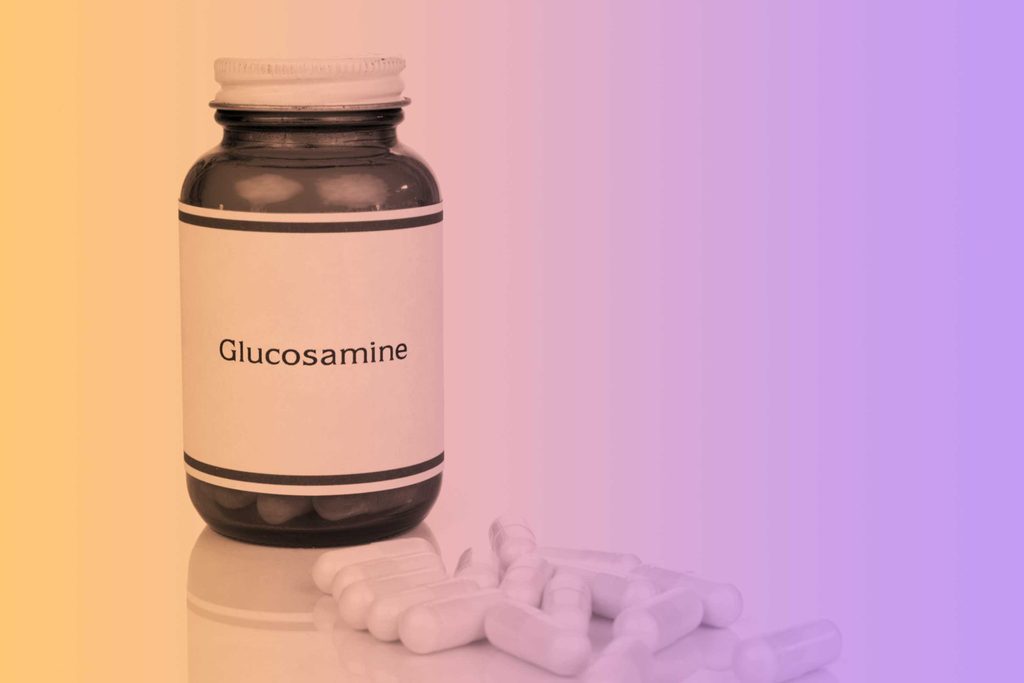Glucosamine Benefits: How It Fights Pain
Updated: Sep. 08, 2017
This simple molecule may work miracles for your arthritis.

Glucosamine is a simple molecule that is used by the body to form connective tissue, tendons, and ligaments. It helps build cartilage—the cushioning at the tips of the bones—and protects and strengthens the joints. Although the body makes its own glucosamine, supplements can be helpful in some situations, especially since the natural sources of the substance are inedible. They include the shells of oysters, crabs, and shrimp.
How Glucosamine Works
Glucosamine is found naturally in high concentrations in joint structures throughout the body. It has several complementary actions: It stimulates new joint cartilage, it helps to slow cartilage deterioration associated with ageing or injury; and it is involved in producing the synovial fluid that cushions joints. Glucosamine is available as a supplement, usually as glucosamine hydrochloride or glucosamine sulfate.
Glucosamine is often taken in conjunction with chondroitin sulfate, which is also thought to reduce joint pain and rebuild cartilage, and methylsulphonylmethane (MSM), an anti-inflammatory sulfur compound that has been shown to reduce joint pain significantly and improve mobility in patients with osteoarthritis (OA) of the knee. Formulations often contain all three substances.
Glucosamine, chondroitin and MSM help to combat both the causes and symptoms of osteoarthritis and rheumatoid arthritis; they may also be helpful for bursitis, osteoporosis, and other degenerative bone diseases, as well as stimulating general wound healing. A large number of studies have been carried out on glucosamine, chondroitin, and MSM; some have been inconclusive, but many have demonstrated worthwhile results. For example, a long-term study published in the Lancet of patients with knee OA who were given 1,500 mg/day of glucosamine sulfate, compared to a control group given a placebo, showed that the glucosamine resulted in a cessation of loss of cartilage. In addition, there was no loss of space in the joint during that period, which in turn resulted in marked improvements in pain management, mobility, and quality of life.
In a related study, published in Osteoarthritis and Cartilage, patients who had previously taken glucosamine supplements were less likely to go on to have knee replacements and were less reliant on anti-inflammatory medications. It is thought that glucosamine is most likely to be of benefit when some cartilage is still available, rather than when significant loss has already occurred. A review of glucosamine research suggests that the glucosamine sulfate is more effective than the hydrochloride form in treating osteoarthritis.
How to Use Glucosamine
Glucosamine supplements come as tablets or capsules. A usual dose is 1,500 mg/day of glucosamine with 1,200 mg of chondroitin and 4,000-8,000 mg of MSM; however, dosages in over-the-counter products may vary depending on the potency of source material. Follow label instructions or take as professionally prescribed.
Safety First
Glucosamine may be sourced from the shells of crustaceans (shrimp, crab, lobster), so should not be taken by anyone with a seafood allergy. Check the label as some brands are synthesized from other materials.
Where to Find Glucosamine
Glucosamine supplements are available in pharmacies and health food stores or from a qualified naturopath.

Get More Natural Remedies Doctors Approve!
The book Doctors’ Favorite Natural Remedies offers effective ways to treat more than 85 health conditions and evaluates the most commonly used alternative therapies and supplements. Learn more and buy Doctors’ Favorite Natural Remedies here.